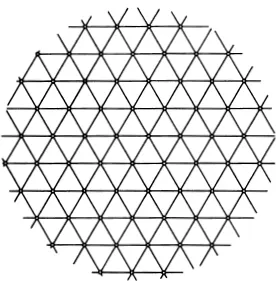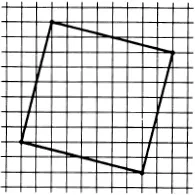
eBook - ePub
Combinatorial Geometry in the Plane
Hugo Hadwiger, Hans Debrunner, Victor Klee
This is a test
Partager le livre
- 128 pages
- English
- ePUB (adapté aux mobiles)
- Disponible sur iOS et Android
eBook - ePub
Combinatorial Geometry in the Plane
Hugo Hadwiger, Hans Debrunner, Victor Klee
Détails du livre
Aperçu du livre
Table des matières
Citations
À propos de ce livre
Geared toward advanced undergraduates familiar with analysis and college geometry, this concise book discusses theorems on topics restricted to the plane such as convexity, coverings, and graphs. In addition to helping students cultivate rigorous thought, the text encourages the development of mathematical intuition and clarifies the nature of mathematical research.
The two-part treatment begins with specific topics including integral distances, covering problems, point set geometry and convexity, simple paradoxes involving point sets, and pure combinatorics, among other subjects. The second part consists of an extensive section of short proofs concerning the earlier material.
Foire aux questions
Comment puis-je résilier mon abonnement ?
Il vous suffit de vous rendre dans la section compte dans paramètres et de cliquer sur « Résilier l’abonnement ». C’est aussi simple que cela ! Une fois que vous aurez résilié votre abonnement, il restera actif pour le reste de la période pour laquelle vous avez payé. Découvrez-en plus ici.
Puis-je / comment puis-je télécharger des livres ?
Pour le moment, tous nos livres en format ePub adaptés aux mobiles peuvent être téléchargés via l’application. La plupart de nos PDF sont également disponibles en téléchargement et les autres seront téléchargeables très prochainement. Découvrez-en plus ici.
Quelle est la différence entre les formules tarifaires ?
Les deux abonnements vous donnent un accès complet à la bibliothèque et à toutes les fonctionnalités de Perlego. Les seules différences sont les tarifs ainsi que la période d’abonnement : avec l’abonnement annuel, vous économiserez environ 30 % par rapport à 12 mois d’abonnement mensuel.
Qu’est-ce que Perlego ?
Nous sommes un service d’abonnement à des ouvrages universitaires en ligne, où vous pouvez accéder à toute une bibliothèque pour un prix inférieur à celui d’un seul livre par mois. Avec plus d’un million de livres sur plus de 1 000 sujets, nous avons ce qu’il vous faut ! Découvrez-en plus ici.
Prenez-vous en charge la synthèse vocale ?
Recherchez le symbole Écouter sur votre prochain livre pour voir si vous pouvez l’écouter. L’outil Écouter lit le texte à haute voix pour vous, en surlignant le passage qui est en cours de lecture. Vous pouvez le mettre sur pause, l’accélérer ou le ralentir. Découvrez-en plus ici.
Est-ce que Combinatorial Geometry in the Plane est un PDF/ePUB en ligne ?
Oui, vous pouvez accéder à Combinatorial Geometry in the Plane par Hugo Hadwiger, Hans Debrunner, Victor Klee en format PDF et/ou ePUB ainsi qu’à d’autres livres populaires dans Mathématiques et Géométrie. Nous disposons de plus d’un million d’ouvrages à découvrir dans notre catalogue.
Informations
Sujet
MathématiquesSous-sujet
GéométriePart I
1.Incidence of Points, Lines, and Circles
The propositions of this first small group deal with incidence relations among points, lines, and circles, and thus pertain to combinatorial elementary geometry.
1. If a finite set of points is such that on the line determined by any two of the points there is always a third point of the set, then all the points lie on a single line.
This theorem was conjectured in 1893 by J. J. Sylvester [102]. A short proof due to T. Gallai (Grünwald) is given by N. G. de Bruijn–P. Erdös [9], where the result appears as a corollary of a purely combinatorial theorem. For further proofs, generalizations, and variants see P. Erdös [16], H. S. M. Coxeter [10], G. A. Dirac [13], and Th. Motzkin [76].
2. If a finite set of lines is such that through the intersection point of any two of the lines there always passes a third line of the set, then all the lines pass through a single point.
Propositions 1 and 2 are no longer true if the sets of points or lines are infinite. This is demonstrated for both theorems simultaneously by the example of the regular countably infinite system of points and lines pictured in Figure 1.
3. If a finite set of points, not all collinear, is such that on the circle determined by any three of the points there is always a fourth point of the set, then all the points lie on a single circle.
A set is said to be bounded if it lies in some circular disk of finite radius, closed if it includes all its limit points, where a point p is a limit point of a set X if every disk centered at p includes a point of X different from p. In both hypothesis and conclusion, the following theorem is closely related to Proposition 3.
4. If a bounded closed set of points is such that the axis of symmetry for any two of its points is always an axis of symmetry for the entire set, then all the points lie on a single circle.
It is easy to see that Propositions 3 and 4 are invalid for sets that are both infinite and unbounded. Indeed, it suffices to consider the entire plane as the set of points in question. An example consisting of countably many points may be constructed as follows : Let A0 be a set of four points not lying on any line or circle. Then let an increasing sequence of finite sets An(n = 0,1, · · · ) be constructed recursively by setting

where φ(Α) denotes the union of all reflections of A in the various lines that are axes of symmetry for pairs of points in A. As one easily verifies, the union S of all the sets An is a countably infinite set with the desired property of symmetry. On the circle determined by any three points of S, there is always a fourth point of S as long as the three points do not determine an equilateral triangle (and even when they do if the construction φ is slightly extended).

Fig. 1
2.Integral Distances. Commensurable Angles
We present next a group of propositions in which a role is played by the integral or rational nature of certain distances.
The set of all points, whose coordinates with respect to an orthogonal coordinate system are both integers, forms the plane unit lattice; its points are called lattice points.
5. If n lattice points form a regular n-gon (n > 2), then n = 4; thus the square is the only regular polygon that can be embedded in the unit lattice.
An ingenious proof of this was given by W. Scherrer [93]; for the case n = 3, see also G. Polya-G. Szegö [82], 2, page 156, problem 238.
As is seen in Figure 2, a square can be embedded in the lattice in ways other than the obvious ones.
For the angles of embedded rhombi the following is known.

Fig. 2
6. If four lattice points determine a nonsquare rhombus with angle α, the quotient α/π is irrational; thus the square is the only rhombus that has angles commensurate with right angles and that can be embedded in the unit lattice.
Closely connected with this is an assertion about angles in Pythagorean triangles, that is, in right triangles whose sides have integral lengths.
7. If α is an acute angle of a Pythagorean triangle, the number α/π is irrational.
Propositions 6 and 7 are geometric corollaries of the following tri...